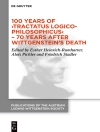This contributed volume aims to reconsider the concept of individuation, clarifying its articulation with respect to contemporary problems in perceptual, neural, developmental, semiotic and social morphogenesis. The authors approach the ontogenetical issue by taking into account the morphogenetic process, involving the concept of individuation proposed by Gilbert Simondon and Gilles Deleuze. The target audience primarily comprises experts in the field but the book may also be beneficial for graduate students. The challenge of the genesis and constitution of “units” has always been at the center of philosophical and scientific research. This ontogenetical issue is common to every discipline but it is articulated in different ways: in phenomenology of perception the constitution of perceptual units is at the base of gestalt field theories, in theoretical neuroscience synchronized neural assemblies are considered as correlates of conscious processes, in developmental embryogenesis the constitution of organs is the principle outcome of morphodynamic evolution while in social morphogenesis the constitution of coherent units is common to segmentary, gerarchic and functional differentiation.
Table of Content
Part one: Rethinking Individuation and morphogenesis.- Part two: Morphologies, culture, and spaces.- Part three: Immanence in semiotics.












